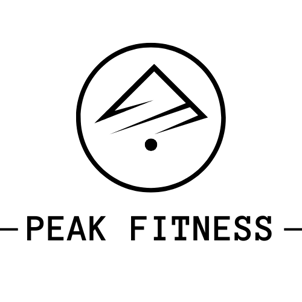Strength Training Myths Busted: Why Lifting Won’t Make Women ‘Bulky"
Strength training is one of the most empowering ways for women to improve their health, build confidence, and achieve a toned, athletic look. This post busts common myths, explains the incredible benefits of lifting weights, and shares simple tips to help women get started on their strength training journey.
5/6/20243 min read


Strength Training Myths Busted: Why Lifting Won’t Make Women ‘Bulky"
For years, the notion of women lifting weights has been surrounded by myths and misconceptions. The most persistent one? That strength training will make women look “bulky” or overly muscular. This fear has kept many women from exploring the benefits of weightlifting and, as a result, missing out on one of the most effective ways to achieve their fitness goals. In this blog post, we’re diving deep into the science, smashing the myths, and showing you why lifting weights is one of the best things you can do for your body.
Myth 1: Lifting Weights Will Make Women “Bulky”
Let’s start by addressing the big one. The idea that lifting weights will make women bulky is rooted in a misunderstanding of biology. Women naturally have lower levels of testosterone than men—the hormone primarily responsible for building large muscle mass. Even with consistent strength training, it’s highly unlikely that women will “bulk up” unless they’re following an extremely specialized diet and training program designed to build muscle mass at a competitive level.
Instead, weightlifting helps women develop lean, toned muscles, enhancing overall shape and definition. Strength training creates a more athletic and sculpted look, not a bulky one.
Myth 2: Cardio Is Better for Weight Loss
While cardio is great for heart health and burning calories, it’s not the only solution for weight loss. In fact, strength training can be even more effective for long-term fat loss. When you lift weights, you build muscle. Muscle tissue burns more calories at rest compared to fat tissue, which means your metabolism gets a boost even when you’re not working out.
By incorporating weightlifting into your routine, you’ll not only burn calories during the workout but also continue to burn more throughout the day. This process, known as the “afterburn effect” (or excess post-exercise oxygen consumption), makes strength training a powerful tool for fat loss.
Myth 3: Strength Training Is Only for Men
Strength training isn’t just for men or bodybuilders—it’s for anyone who wants to improve their health, strength, and quality of life. Women can benefit tremendously from lifting weights, including:
Increased Strength: Everyday tasks like lifting groceries or moving furniture become easier.
Improved Bone Health: Weight-bearing exercises help prevent osteoporosis by increasing bone density.
Enhanced Confidence: Feeling strong and capable has a positive impact on self-esteem.
Better Posture: Stronger muscles support proper alignment, reducing the risk of back pain and improving overall posture.
Reduced Risk of Injury: Strengthening muscles and joints lowers the risk of injuries, especially as you age.
The Benefits of Strength Training for Women
If you’re still on the fence about lifting weights, here are some of the incredible benefits you can look forward to:
Toned and Defined Muscles: Strength training gives your body shape and definition, helping you achieve a fit and athletic look.
Increased Energy Levels: Regular workouts can help you feel more energised and focused throughout the day.
Better Mood: Exercise releases endorphins, which are natural mood boosters that reduce stress and improve mental health.
Improved Longevity: Studies have shown that regular strength training contributes to a longer, healthier life.
Faster Metabolism: As mentioned earlier, more muscle means a higher resting metabolic rate, making it easier to maintain a healthy weight.
How to Get Started with Strength Training
If you’re new to strength training, it’s essential to start slow and focus on proper form. Here are some tips to help you begin:
Start with Body weight Exercises: Push-ups, squats, and planks are great ways to build foundational strength before moving to weights.
Incorporate Dumbbells or Resistance Bands: These are beginner-friendly tools to add resistance without feeling intimidating.
Work with a Trainer: If you’re unsure about proper techniques, a personal trainer can guide you and help you avoid injury.
Set Realistic Goals: Focus on building strength gradually and celebrate small victories along the way.
Stay Consistent: Aim for at least 2-3 strength training sessions per week for optimal results.
In Conclusion
Strength training is one of the most empowering and effective ways for women to improve their physical and mental health. Forget the myths and embrace the benefits of lifting weights. You won’t get bulky—you’ll get strong, confident, and healthy. So grab those weights, challenge yourself, and discover just how powerful you can be!
Peak Fitness Hub
Empowering you to achieve your fitness goals.
Affiliate Disclaimer
This website contains affiliate links, meaning I may earn a commission at no extra cost to you. I only recommend products I trust. Your support is appreciated!
© 2024. All rights reserved.
